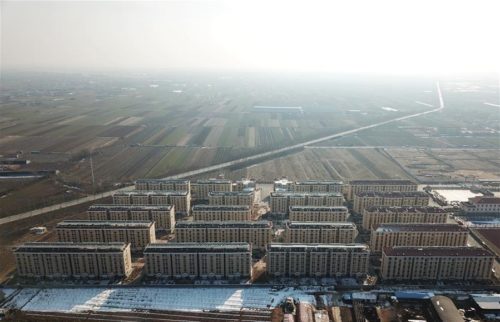Last, last, last days of old Peking
Top society and culture news for April 20, 2017. Part of the daily The China Project news roundup "He fled from Bo Xilai; now he wants to make 300,000 electric cars in China."

The Los Angeles Times has published an article titled “If there’s debris and destruction, it must be springtime in Beijing,” which says that “the government has embarked on a renovation project in Beijing’s centuries-old courtyard alleyways known as hútòng 胡同… Officials want to create an ‘orderly, civilized and beautiful street environment’ in these remaining alleys by rooting out unlicensed buildings and reducing clutter.” But many fear that the cleanup campaign will be done insensitively, and cause the capital to lose the slightly chaotic charm of its last remaining hutong. The article quotes Jeremiah Jenne, a historian and occasional blogger who leads walking tours through hutongs in Beijing: “The government itself is wrestling with the question of what the hutongs mean in Beijing… Are they an eyesore or a tourist attraction?”
A Weibo post (in Chinese) from the Beijing government explains the current plans for the area around Nanmencang Hutong 南门仓胡同, which is mainly to destroy all structures built without a permit and widen the alleyways. Here is a Weibo posting (in Chinese) from February with several photos showing cleanup work that was done on the Dongsi Shiyi Tiao Hutong 北京东四十一条. The Weibo account of the bookstore Zhengyang Shuju 正阳书局 has photos of bricks from Beijing’s old city walls turning up in the rubble after the destruction of illegally built structures: The city walls were mostly destroyed in 1955, and hutong residents made use of their rubble to build their own additions to their cramped hutong houses.
The Financial Times has published an article (paywall) on another big change in Beijing’s urban environment: “Beijing has announced plans to combat what it calls ‘urban diseases’ by capping its population and shrinking its footprint, wreaking havoc on the small businesses and migrants that throng its bustling streets.”
Beijing has, of course, been changing for decades. For more on previous cycles of destruction and no renovation, we can recommend these books:
- The Last Days of Old Beijing: Life in the Vanishing Backstreets of a City Transformed, by Michael Meyer about the city in the two decades leading up to the 2008 Olympics.
- Peking Story: The Last Days of Old China, by David Kidd, which describes two years that the author spent in the capital before and after the 1948 Communist takeover of the city with his wife, the daughter of a prominent Beijing family.
- China’s Road Pictures set to remake ‘Run Lola Run’ / China Film Insider
- Trafficked into wedlock: A Cambodian wife in rural China / ChinaFile
- Chinese parents are using Peppa Pig to prepare their toddlers for the Ivy League / Quartz
- Chinese park hobbles energetic street dancers / SCMP
- Review: In ‘Born in China,’ an antelope outshines a panda / NYT (paywall)
- Ultra-real China / LARB Blog






